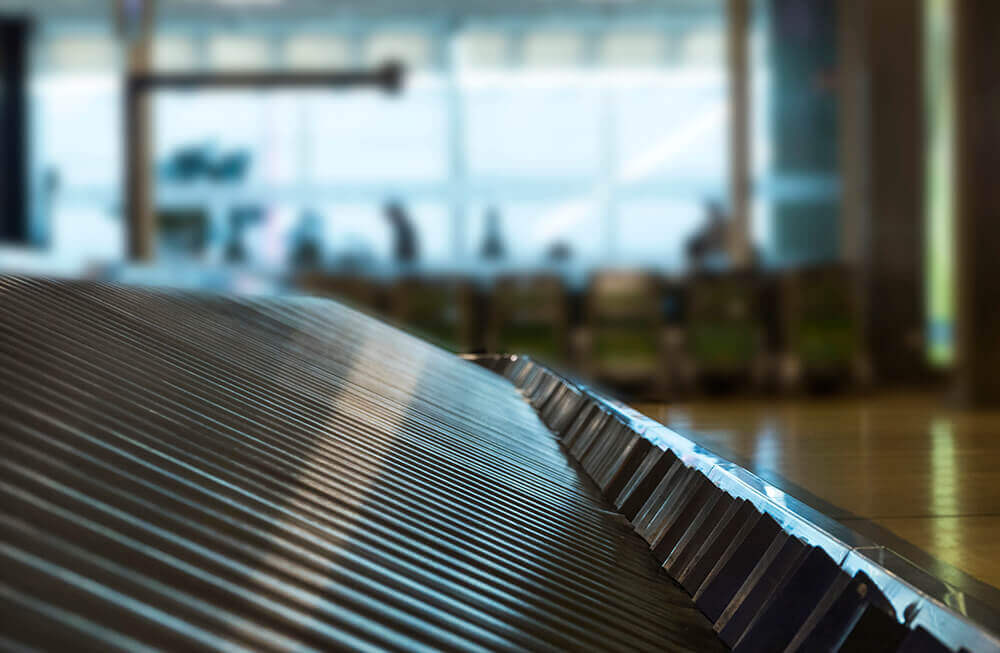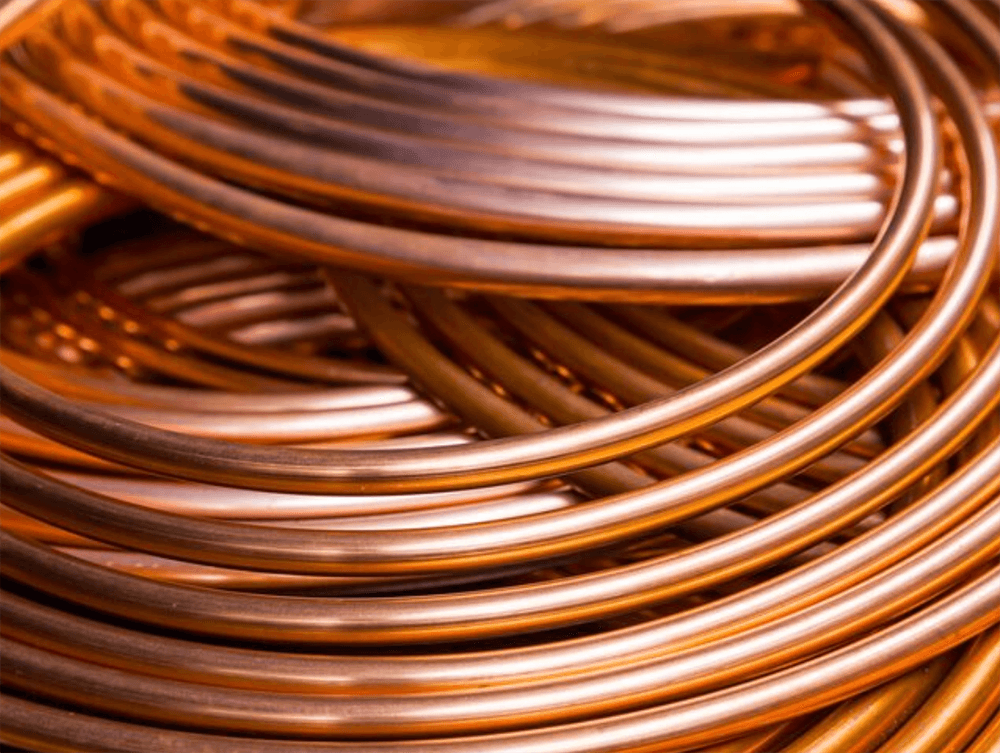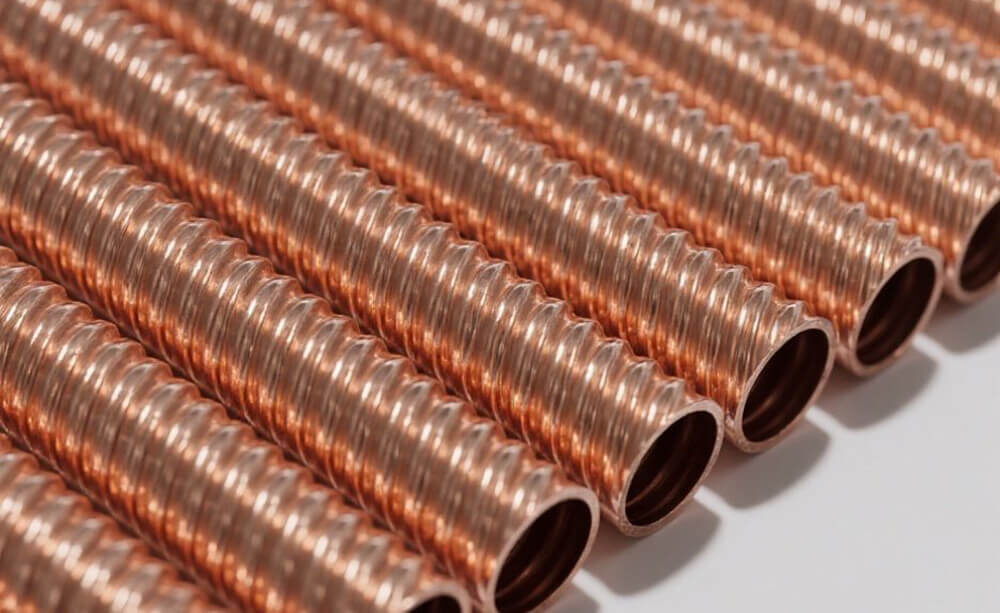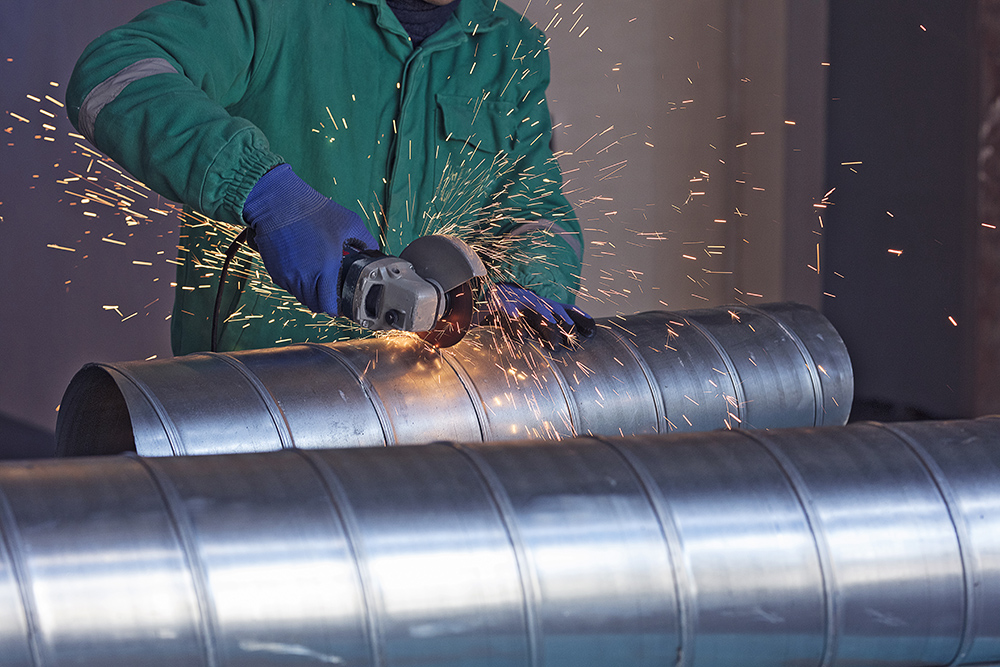Copper tubing possesses excellent electrical conductivity and thermal conductivity, making it the primary material for electrical components and heat dissipation components in electronic products. It has also become the preferred choice for modern contractors in the installation of water supply, heating, and cooling pipelines in all residential housing projects. Copper tubing exhibits strong corrosion resistance, is resistant to oxidation, and does not readily react chemically with certain liquid substances. It is also easy to bend and shape.
1. Selection of Welding Materials Copper tubing is a crucial raw material for refrigeration systems, primarily serving two functions: ① manufacturing heat exchangers; ② connecting pipes and fittings. Commonly used solder types include copper-phosphorus solder, silver-copper solder, and copper-zinc solder. During welding, it is essential to select the appropriate solder based on the characteristics of the pipe material and perform the process skillfully to ensure welding quality.
1.1 Welding of Similar Materials
(1) For brazing copper to copper, phosphor bronze solder or low-silver copper-phosphorus solder can be used. This solder is relatively inexpensive and has good molten properties. It uses a filling and wetting process and does not require additional solder. (2) For steel-to-steel welding, brass rod solder combined with appropriate flux can be used. During welding, the solder is heated to a certain temperature and placed in the flux, causing the flux to melt and adhere to the solder. However, after welding, any residual flux around the weld joint must be thoroughly cleaned to prevent corrosion.
1.2 Welding of dissimilar materials
(1) For welding copper to steel or copper to aluminum, silver-copper solder and appropriate flux can be used. After welding, any residual flux near the weld joint must be thoroughly cleaned with hot water or steam to prevent corrosion. When using flux, it is best to dilute it with alcohol to form a paste, apply it to the weld joint surface, and during welding, the alcohol evaporates quickly to form a smooth film that does not easily flow away, while also preventing moisture from entering the refrigeration system. (2) For welding copper to iron, phosphor bronze solder or brass rod solder can be used, but appropriate flux must also be used, such as borax, boric acid, or a mixture of boric acid flux.
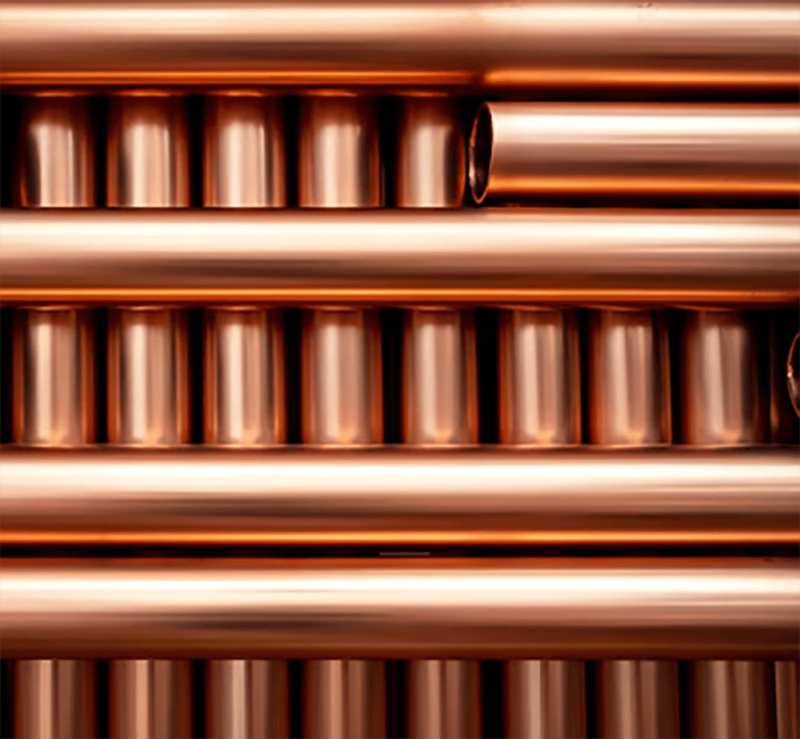
2. Welding Operations.
The size of the welding torch and the flame temperature required vary depending on the materials being welded and the pipe diameter. The size of the flame can be controlled and adjusted using two needle valves. Flame adjustment is categorized into three types based on the volume ratio of oxygen and acetylene gas: carbonizing flame, neutral flame, and oxidizing flame.
2.1 Types and Characteristics of Flames
(1) Carbonizing Flame: Its characteristic is that the volume ratio of oxygen to acetylene is less than 1, slightly oxygen-deficient, easily carries carbon particles into the metal and affects the flow of the flux, emits black smoke, and has a temperature of approximately 2700°C. It can be used for baking pipes, etc. (2) Neutral Flame: The size of the flame core depends on the composition, consumption rate, and flow velocity of the combustion gases. The diameter of the torch nozzle hole determines the diameter of the flame core, while the flow velocity of the mixture determines the length of the flame core. The neutral flame consists of three layers: the flame core is conical, white and bright, with the inner flame being blue-white and the outer flame gradually changing from light purple to orange and blue from the inside out. The temperature is approximately 3000–3500°C, with the volume ratio of oxygen to acetylene being 1:1.2. Neutral flames are commonly used for welding refrigeration and air conditioning pipe fittings. (3) Oxidizing flame Its characteristics include a conical flame core with a significantly shorter length and an unclear outline, a dull color, and a shorter outer flame. The flame is blue, and combustion is accompanied by a sound whose intensity depends on oxygen pressure. The temperature of the oxidizing flame is higher than that of the neutral flame, making it suitable for welding brass fittings. The nature of the flame is selected based on the type and properties of the metal being welded, and it is important to select and use it scientifically.
2.2 Flame Adjustment
Before ignition, first open the valves of the oxygen cylinder and acetylene cylinder according to the operating procedures, ensuring that the low-pressure oxygen gauge reads approximately 0.2–0.5 MPa and the acetylene pressure gauge reads approximately 0.05 MPa. Then slightly open the oxygen valve on the welding torch. Next, slightly open the acetylene valve on the welding torch, and simultaneously ignite the flame quickly from the rear of the torch nozzle. Never ignite the flame from the front of the nozzle to avoid being burned by the flame. After ignition, adjust the valves to regulate the ratio of oxygen and acetylene entering the welding torch, thereby producing different types of flames.
2.3 Welding During welding
Strictly follow the steps; otherwise, it will affect the quality of the weld. (1) Clean the surface of the pipe fittings to be welded or flare the ends. The flared ends should be smooth, round, free of burrs and cracks, and of uniform thickness. Use sandpaper to clean the copper pipe joints to be welded, and finally wipe them clean with a dry cloth. Otherwise, it will affect the flow of the solder and the quality of the weld. (2) Overlap and insert the copper tubes to be welded (pay attention to dimensions) and align the centers. (3) Preheat the workpiece before welding. Heat the copper tube joint with the flame until it turns purple-red, then weld using silver solder. After removing the flame, place the solder near the weld joint, allowing it to melt and flow into the copper components being welded. The temperature can be determined by the color of the solder. (4) It is best to use a strong flame for quick welding, minimizing welding time to prevent excessive oxidation inside the pipe. Oxidation can cause blockages due to the flow of refrigerant and may even severely damage the compressor. (5) During welding, do not shake or vibrate the copper tube while the solder is still molten, as this may cause cracks in the welded area and result in leaks. (6) For refrigeration systems filled with R12, welding must not be performed without first completely purging the R12 refrigerant. Welding repairs must also not be performed while the refrigeration system is still leaking, to prevent R12 refrigerant from reacting with open flames to produce toxic phosgene gas, which can harm human health.
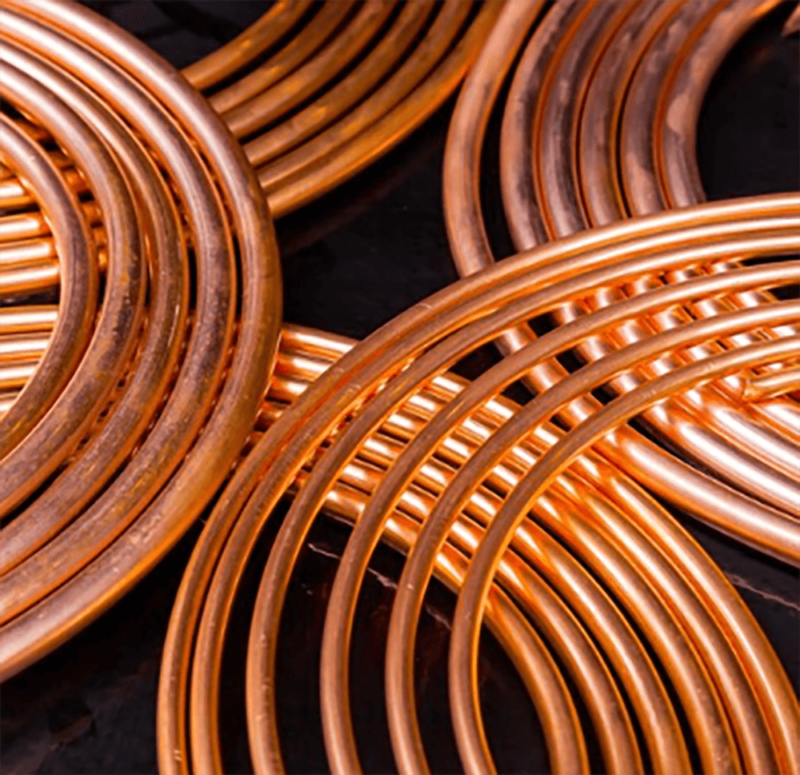
3. Welding Methods for Workpieces
3.1 Welding of Same-Diameter Pipe Fittings
When welding copper tubes of the same diameter in a refrigeration system, use sleeve welding. Expand the tube to be welded into a cup shape or bell mouth, then insert the other tube. If the insertion is too short, it not only affects strength and sealing but also allows flux to enter the pipe, causing contamination or blockage; if the gap between the inner and outer tubes is too small, the flux cannot flow into the joint surface and can only adhere to the outside of the joint, resulting in poor strength, and the joint may crack and leak under vibration or bending forces. If the gap is too large, the flux may enter the pipe, causing contamination or blockage, and the weld may also leak due to insufficient flux filling in the weld seam, resulting in poor quality and material waste. Therefore, selecting the appropriate insertion length and gap between the two pipes is of utmost importance.
3.2 Welding of Capillary Tubes and Copper Tubes
When repairing the dry filter of a refrigeration system, it is necessary to weld the capillary tube (throttle capillary tube). When welding the capillary tube to the dry filter or other pipes, due to the significant difference in tube diameters and the capillary tube’s small thermal capacity, overheating is likely to occur, causing the capillary tube’s grain structure to coarsen, become brittle, and easily break. To prevent overheating of the capillary tube, the oxy-acetylene flame should be directed away from the capillary tube, ensuring that both the capillary tube and the larger tube reach the welding temperature simultaneously. Alternatively, a metal clamp can be used to secure a thick copper plate to the capillary tube, increasing the heat dissipation area and preventing overheating.
3.3 Welding of the Capillary Tube to the Drying Filter
The insertion depth of the capillary tube should be controlled to be 5–15 mm. The distance between the insertion end face of the capillary tube and the drying filter and the end face of the filter mesh should be 5 mm, with a clearance of 0.06–0.15 mm, as shown in Figure 2. The end of the capillary tube should preferably be made into a 45° horseshoe shape to prevent impurity particles from accumulating at the end face and causing blockage. When the two tube diameters differ significantly, the dry filter can also be flattened using a tube clamp or pliers, but the internal capillary tube must not be compressed (crushed). That is, first insert the capillary tube into the copper tube, then use a tube clamp to flatten it 10 mm from the end of the larger tube.
3.4 Welding of refrigerant tubes and compressor ducts
The depth of the refrigerant pipe inserted into the conduit must be at least 10mm. If it is less than 10mm, the refrigerant pipe may shift outward during heating, causing the flux to block the pipe opening. 4. Inspection of Welding Quality To ensure absolute leak-proofness at the welded joints, necessary inspections must be conducted after welding. (1) Check the sealing performance of the welded joints. After adding refrigerant or nitrogen and allowing it to stabilize for a certain period of time, inspection can be performed using soapy water or other methods. (2) During operation of the refrigeration and air conditioning system, welding joints must not crack or develop gaps due to vibration. (3) Piping must not become blocked by foreign objects entering during welding, nor must moisture enter due to improper operation. (4) During operation of the refrigeration and air conditioning system, the surface of the welding area must be clean and free of oil contamination. In summary, during copper tube welding, improper operation can easily lead to defects such as incomplete fusion, melting erosion, burn-through, overheating, and burn-through. Therefore, during use, process control must be strengthened, and process requirements must be strictly adhered to.
4. Welding Quality Inspection
To ensure absolute leak-proofness of the welded areas, necessary inspections must be conducted after welding. (1) Inspect the sealing performance of the welded joints. After adding refrigerant or nitrogen and allowing it to stabilize for a certain period of time, soapy water or other methods can be used for inspection. (2) During the operation of the refrigeration and air conditioning system, the welded joints should not crack or develop gaps due to vibration. (3) The piping should not be blocked by foreign objects entering during welding, nor should moisture enter due to improper operation. (4) When the refrigeration and air conditioning system is in operation, the surface of the welded joints should be clean and free of oil contamination.
In summary, during copper tube welding, improper operation can easily lead to defects such as incomplete fusion, melting erosion, penetration, overheating, and burn-through. Therefore, during use, process control must be strengthened, and process requirements must be strictly adhered to.

